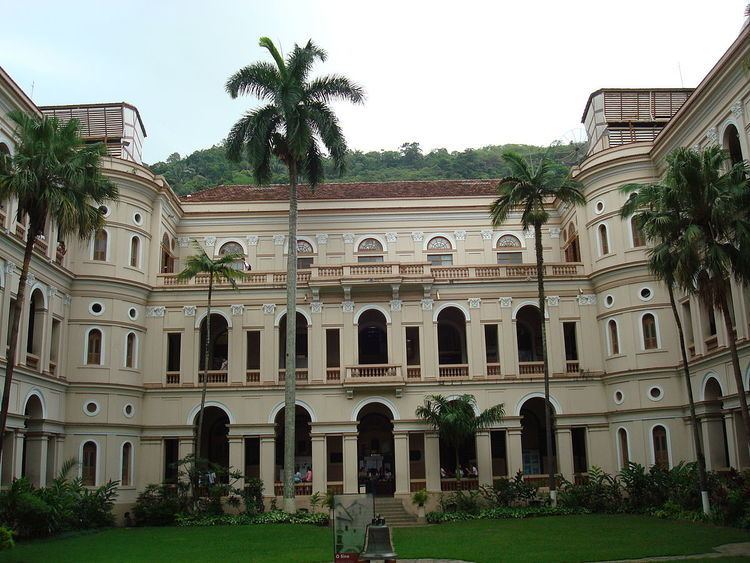Phone +55 21 3184-6200 | ||
 | ||
Established 1903 (114 years ago) (1903) as Externato St. Ignatius Gender Boys' (until early 1970s)Coeducational (since early 1970s) Similar Imagem Solidária, Andrews, Escola Alemã Corcovado, Colégio Liceu Franco‑Br, Colegio Cruzeiro Profiles | ||
St. Ignatius College, Rio de Janeiro (Potuguese: Colégio de Santo Inácio, Rio de Janeiro), is a Brazilian private, Catholic school, located in the neighborhood of Botafogo in the South Zone of the city of Rio de Janeiro. It serves students from kindergarten through secondary school, and includes also a night school for youth and adults.
The schools was founded in 1903 by the Society of Jesus.
The architectural ensemble of the institution, which includes the original school building, the Church of Our Lady of Victories, the Anchieta House, and the headquarters of the Marian Congregation Our Lady of Victories, was listed as an historical site by the city of Rio de Janeiro in 2007.
History
In 1567, with the expulsion of the French, the city of Rio de Janeiro was transferred to Castle Hill where in the same year a Jesuit college was founded, the first school in the city, with Father Manuel da Nobrega as the first dean. The early emphasis was on catechesis of the native people.
When in 1759 the Jesuits were expelled from Brazil – prior to the suppression of the Society of Jesus in 1773 by Pope Clement XIV – the school was transformed for military use.
When the Society of Jesus was restored in 1814, the Jesuits did not return to Castle Hill. Some of the Castle Hill trophies, though, would catch up with them.
In 1922, under the pretext of cleanup and open space for pavilions during the Independence Centenary International Exposition in Brazil, the hill was dismantled and the church and the old school building demolished. The original bell and a set of Baroque sculptures from Morro Castle church were preserved and now adorn the main courtyard and the lobby of St. Ignatius College. The columns and the front of the Church of St. Ignatius at the school's present site on Rua São Clemente were originally intended for the church attached to the school at Castle Hill which was never completed. The painting of Ignatius Loyola on his altar at the present church.
In 1900, the residence of Jesuit priests in Rio was at 35 Senador Vergueiro, in the Flamengo neighborhood. It remained there until 1902, with a small primary school where Father Alexandre Diomedi taught some boys music and prepared them for first communion.
In July 1903, the priests moved to #132 Sao Clemente Avenue in Botafogo, and later to #226. They rented a house for 500 escudos, after attempts to decades of Jesuit reopen a school in Rio, began operating the Externato St. Ignatius. The first rector was Domingos de Meis, a priest. It was renamed to St. Ignatius College in 1942. He is currently held by the Brazilian Society of Education.
Initially, in 1903, nine students enrolled in what would now be fifth year, with only one teacher. On 27 September 1905, the house where he taught was purchased for 150,000 cruises. There were then 92 students. It was not until the early 1970s that the school admitted girls.
